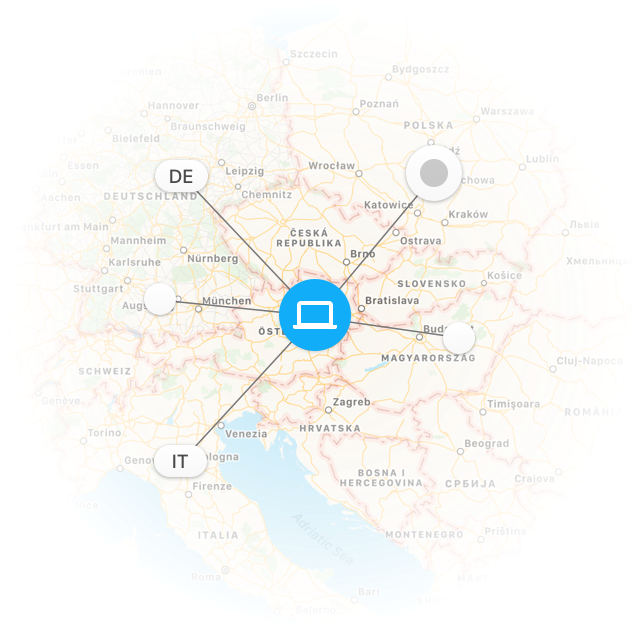Real-world Use Case For Little Snitch
- Little Snitch Mac
- Real-world Use Case For Little Snitch 2
- Real-world Use Case For Little Snitch Free
- Little Snitch Reviews
Sep 09, 2016 I’ve been an active user of Little Snitch for quite some time now and it took me a while to understand how to properly use it without going completely insane. The first thing you will want to do is create a couple rules for “Any Process” denying every connection. The Golden Snitch, often simply called the Snitch, is the third and smallest ball used in Quidditch. It is a walnut-sized gold-coloured sphere with silver wings. It flies around the Quidditch field at high speeds, sometimes pausing and hovering in place. The Seeker's goal is to catch the Snitch. Also, I suspect many people use Little Snitch to block pirated software from checking their license. Little Snitch lets you configure the firewall per application, not just address or port. Ie: you can configure it so one web browser can access a web site but not another. Little Snitch also monitors network traffic on a per-application basis. Little Snitch gives you control over your private outgoing data. Track background activity As soon as your computer connects to the Internet, applications often have permission to. In this case, Little Snitch uses the Internet address for rule matching and presents this address to the user in connection alerts. It checks whether, by chance, all names are in the same domain (e.g. Www.google.com, books.google.com and maps.google.com). If they are, it checks whether a rule for the domain matches and applies it.
The Internet Protocol (IP) works with numeric addresses only. Since humans prefer to use names, there is a service that translates names to numeric addresses, similar to a phone book. This service, the Domain Name System (DNS) is a distributed hierarchical database.

At kernel level, where Little Snitch intercepts network traffic, it sees only numeric Internet addresses, no names. In order to match rules, a name must be found for the address.
Little Snitch Mac
Although there is a “reverse phone book” (reverse lookup) for Internet addresses, it is of little use for our purpose. A name can resolve to multiple Internet addresses and multiple names can resolve to the same Internet address. The reverse lookup usually returns just one of the names for a computer and that’s rarely the same name as used to initiate the connection in the first place.
Little Snitch uses two strategies to find a server’s name given its Internet address:
Real-world Use Case For Little Snitch 2
DNS sniffing
Little Snitch watches all processes when they resolve names to addresses and keeps track of which process knows what. If it encounters a connection attempt, it looks at the Internet address and which process is using it. Then it checks how the process came to know it, which name it used to obtain the address.
If the process can know only one name for the address, we are done, we have the name. If the process resolved multiple names with the same Internet address as result, we have to dig deeper.
Deep packet inspection

Real-world Use Case For Little Snitch Free
Little Snitch is not the only one who needs to know computer names. A content delivery network, for example, hosts many customers on the same Internet address and still they need to serve different content for each customer.
In order to solve this problem, many protocols (such as HTTP 1.1) send the server’s name as part of every request. If DNS sniffing did not provide a unique name, Little Snitch allows the process to connect, regardless of the current rule set and captures the first request sent. The request itself is not passed to the server yet. Little Snitch inspects the protocol headers. If it can find a server name, we are done. Little Snitch matches rules given the name and either passes on the delayed request or discards it and closes the connection.
Little Snitch does not intercept encrypted communication (SSL/TLS). Looking at the (unencrypted) Server Name Indication (SNI) header is sufficient to obtain a server name.
If no unique server name is found
Little Snitch may still fail to determine a unique name. If the process looked up multiple names with the same result and uses a protocol which does not transfer the server name, we have a set of names, not a single name.
In this case, Little Snitch uses the Internet address for rule matching and presents this address to the user in connection alerts. It checks whether, by chance, all names are in the same domain (e.g. www.google.com, books.google.com and maps.google.com). If they are, it checks whether a rule for the domain matches and applies it. If not, it adds this information to the connection alert.
Little Snitch Reviews
Incoming connections
If an incoming packet is a connectionless response to an outgoing request (e.g. UDP based protocols), Little Snitch counts it as received data for the outgoing request, treating the conversation like a connection.
For spontaneous incoming connections, Little Snitch cannot determine a remote computer name. All we have ever seen is its Internet address. Incoming connections are therefore always displayed with a numeric address only.
Was this help page useful? Send feedback.
© 2016-2020 by Objective Development Software GmbH
